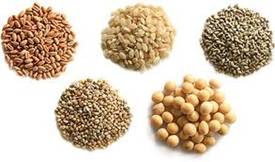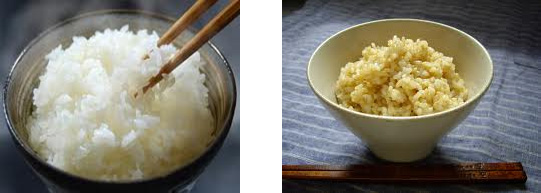
Since antiquity, the Japanese have prayed for plentiful harvests of gokoku – five grains. Well, what are they? Five grains consist of rice, barley/wheat, soybean, and two species of millet. Since the beginning of agriculture, people throughout the world have cultivated various kinds of grains. In Japan, they have grown the above five grains for their staple food.
For Japanese people, rice has been the most important of the five, but in earlier years, the rest of the grains were also very important in their lives. For example, barley and wheat were second-most important grains. It is said that the cultivation of wheat has about a 10,000-year-old history, and the methods of growing wheat and barley were introduced to Japan during the Yayoi period. They were grown as aftercrops for rice and mainly used as livestock feed. It was not until the Edo period that common people were able to eat flour products such as udon and manju with the advancement of millstone technology.
The soybean, often referred to as “meat from the field” is one of the important protein sources for the Japanese. It is also an essential ingredient for traditional seasonings such as soy source and miso, so it is natural that soybean was counted as one of the five grains.
Small gramineous crops such as foxtail millet, millet, and Japanese barnyard millet are collectively known as “millet”. These crops grow faster in less fertile and dry areas with fewer insect pests compared to major grains. Therefore, people grew millet as substitute grains to consume in lean years and/or as feed for birds and livestock. Common people in the past rarely had a ball of 100% pure rice; they usually ate mixed rice with millet and barley to make up for shortage.

It is only recently, however, that nutrients contained in millet have come to be valued. Nowadays we love to eat polished “white rice” which is lacking vitamins and minerals found in unpolished rice. Maybe we need to eat rice keeping in mind how important it is for us to get “plentiful harvest of five grains.”
Reported by Yukari Aoike, Sugahara Institute
